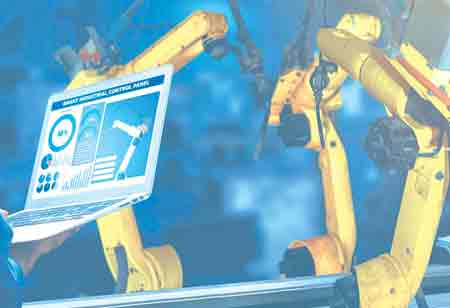Chemical Industry Review | Wednesday, December 14, 2022
Organizations that are driven by everyday processes can use Industry 4.0 technology entirely to boost production while lowering risk.
Industry 4.0 technologies enable dozens of new breakthroughs in the areas of technological transition, cyber-physical system (CPS) enhancement, and commercialization. Industry 4.0 aims to create intelligent products through intelligent approaches and processes. Companies driven by business operations can use Industry 4.0 technology purely to boost efficiency while minimizing risk, whereas those engaged in development can apply Industry 4.0 concepts to generate more revenue or novel sources of revenue.
Benefits of Industry 4.0 to production and material management
Chemical companies can improve process controls, venture through knowledge and resource management, and decrease manufacturing cycles using Industry 4.0. It ultimately improves the production and efficiency of the organization. It significantly lowers total quality costs while maintaining optimal resource utilization.
Industry 4.0 also includes advanced analytics capabilities, which help chemical companies track trends and stimulate innovative ways of quality management, reducing outages and nonconformances. Manufacturers can achieve high-quality fabrication in batch or continuous processing using sophisticated detection methods offered by IoT.
Chemical companies can improve process controls, venture through knowledge and resource management, and decrease manufacturing cycles using Industry 4.0.
Furthermore, Industry 4.0 technologies are advancing for better process administration, allowing operators to monitor instrument data and facility activities with greater freedom. This makes it convenient for the chemical industry, a capital-intensive business, to keep track of critical equipment like rotors, compressors, and extruders to predict and prevent malfunctions. In a word, Industry 4.0 encourages chemical manufacturers to shift from reactive to predictive maintenance as quickly as possible.
Drawbacks
Despite the numerous advantages of Industry 4.0 deployment, there are still a number of hurdles and constraints. Resources and mentorship requirements, cyber security difficulties, physical components of manufacturing processes, and software interface standards are all examples of implementation hurdles for Industry 4.0 technology.
Modeling and transcription of complex chemical industrial systems, as well as the integration of current monitoring and information systems with such systems, have proven to be technical challenges. Durability and confidentiality of digital IoT systems, forecasting of chemical mixture properties, and conceptual frameworks for modeling sustainable and variable chemical processes with quickly changing stoichiometric parameters are among the other restrictions.

